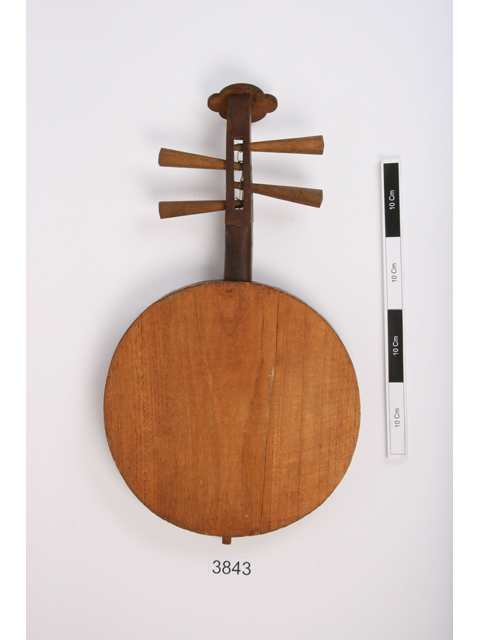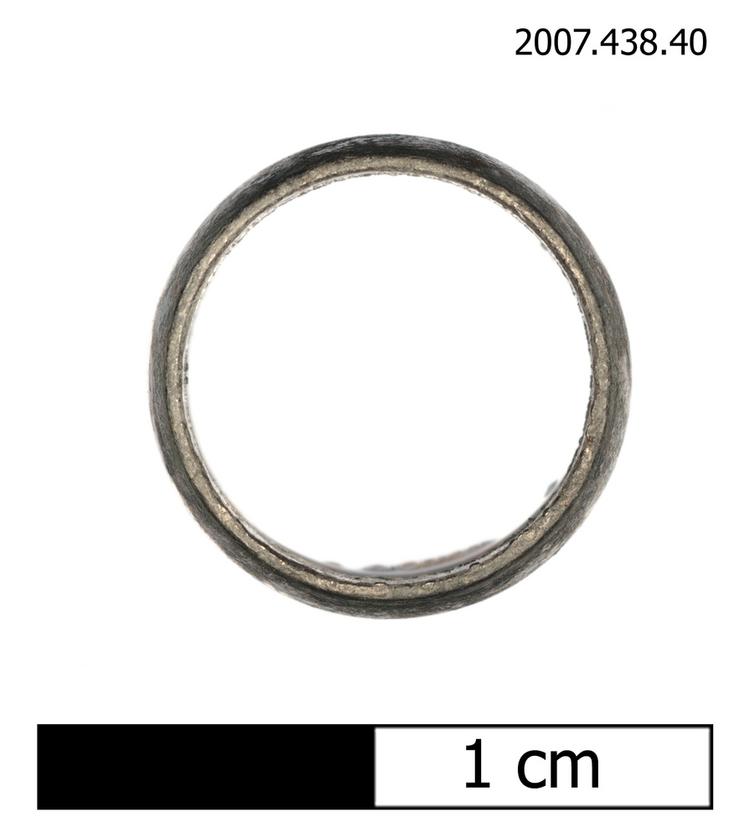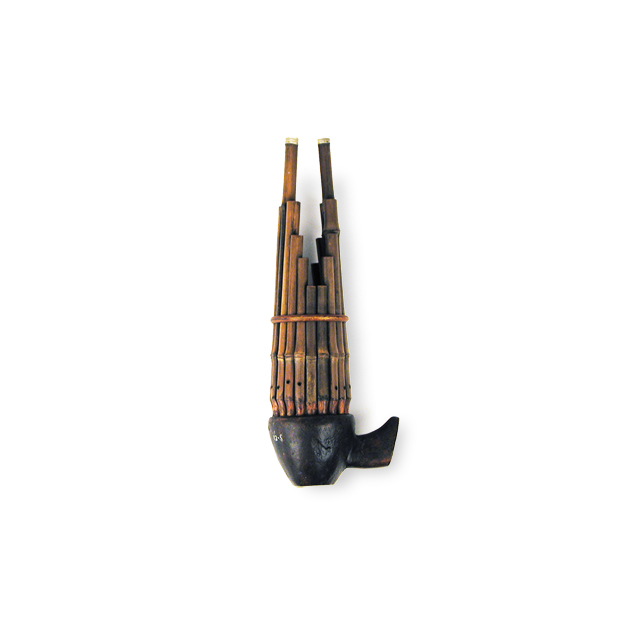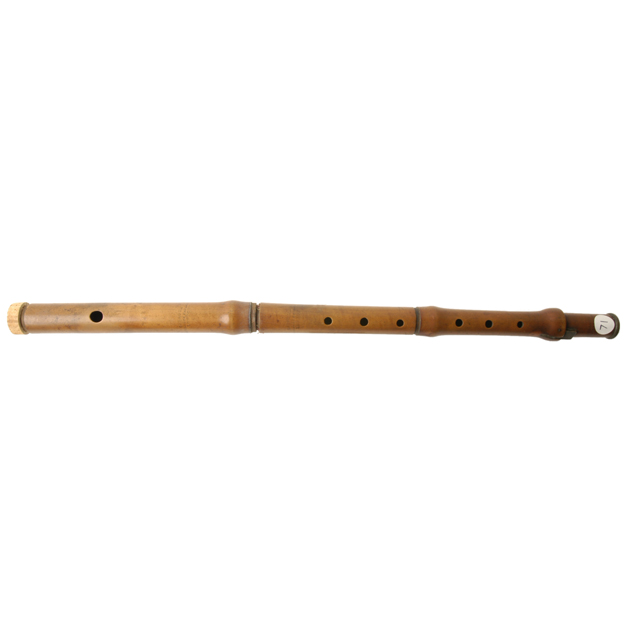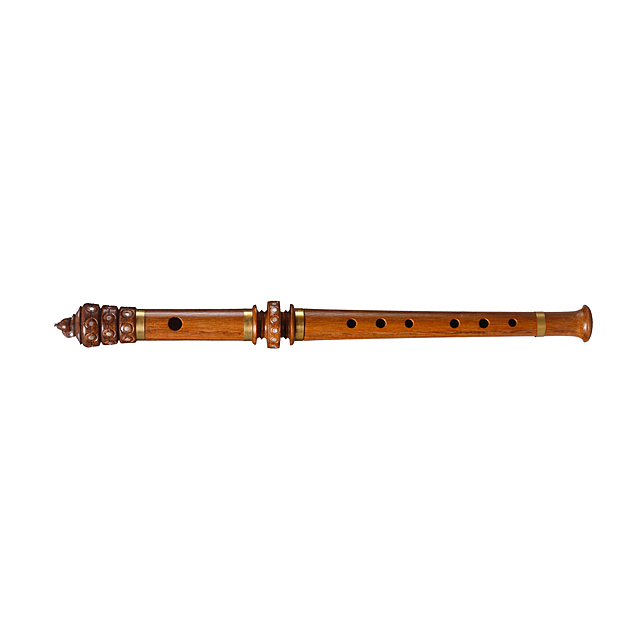
Basuri, transverse flute, of rosewood. The outside has been lathed to a shape which resembles a head joint and a body joint, although it is in effect a single tube. The exterior of the head is cylindrical, while the body tapers towards the foot, and its internal bore is also an inverse cone. The fingerholes are arranged in two groups of three. The proximal end has three turned rings of graduated diameter, with the widest at the end. A small wooden decorative bead dangles from a wire eye at the end. A single ring, flanked by two grooves, connects the head section to the body section. Each of the rings has a row of circular grooves cut into the rim, each with a flat headed nail at its centre. At the distal end, the outside of the body expands to form a flared foot. Four bands of sheet brass are applied to the exterior, one at each end of the head and body sections.
This instrument was purchased by the anthropologist Ken Teague in the Indrachowk area of Kathmandu in 1987. The flute seller came from near Patna in India but explained that the basuri is associated with the Manang people based north of the capital.



